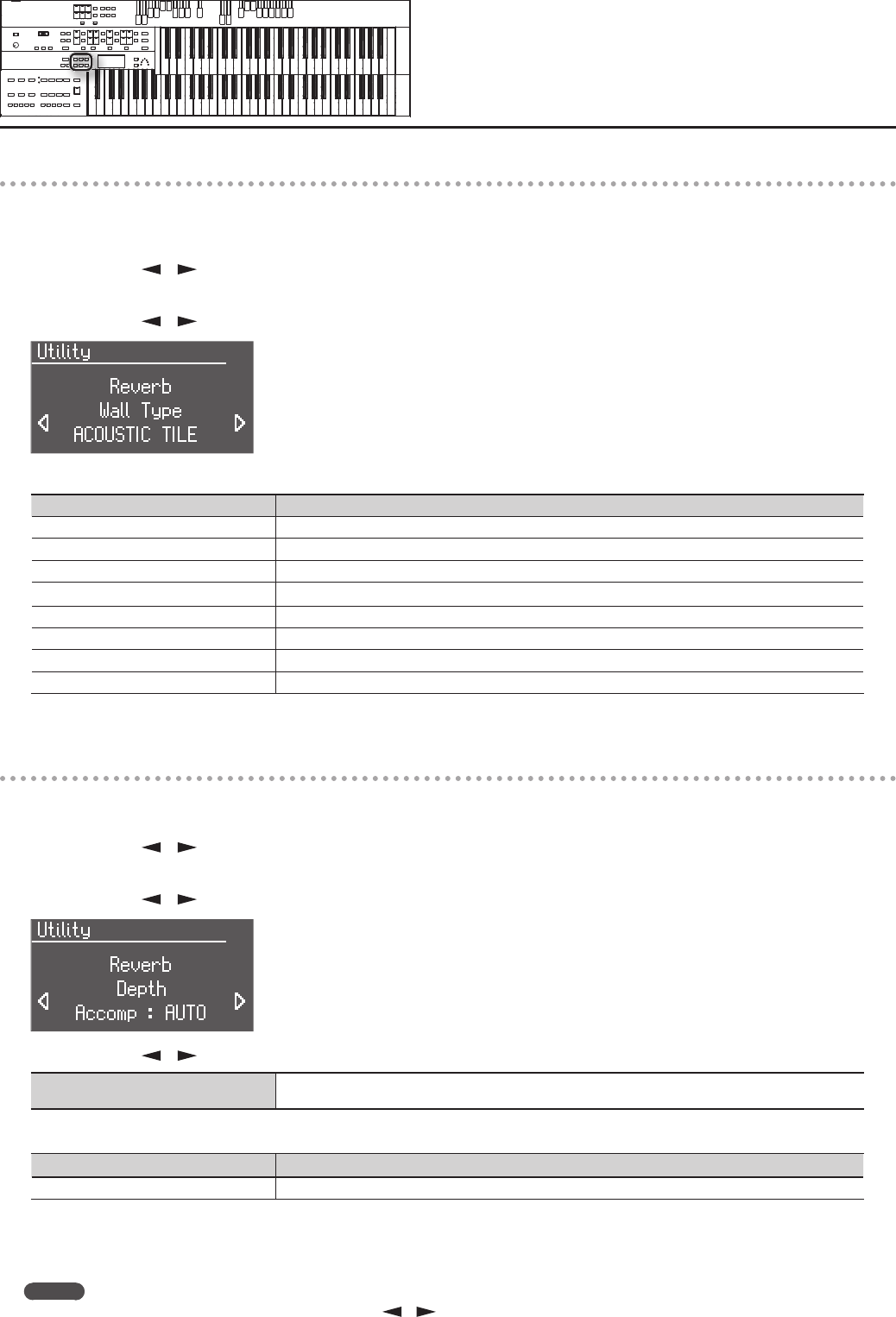
42
Changing the wall type
By changing the type of reverb you can experience the feeling of performing in various dierent locations, and by changing the Wall Type (wall
material) you can make further adjustments to the way in which reverberation occurs.
1. Press the [Utility] button.
2. Press the Menu [
] [ ] buttons to select “Reverb.”
3. Press the [Utility] button.
4. Press the Menu [
] [ ] buttons to select “Wall Type.”
5. Press the Value [-] [+] buttons to select a Wall type.
Type Explanation
DRAPERY Pleated curtain
CARPET Carpet
ACOUSTIC TILE Acoustical tile, sound-absorptive tile
WOOD Wood
BRICK Brick
PLASTER Plaster
CONCRETE BLOCK Concrete block
MARBLE Marble
To return to the basic screen, press the [Display/Exit] button.
Changing the depth of the reverb
You can make independent settings for each Part.
1. Press the [Utility] button.
2. Press the Menu [
] [ ] buttons to select “Reverb.”
3. Press the [Utility] button.
4. Press the Menu [
] [ ] buttons to select “Depth.”
5. Press the Menu [ ] [ ] buttons to select the part whose reverb depth you wish to adjust.
Part
Accomp (Automatic Accompaniment except Bass), Rhythm, Drums, M.Perc
A.Bass (Bass part of Automatic Accompaniment), Pedal, Lower, Solo, Vintage
6. Press the Value [-] [+] buttons to adjust the setting.
Settings Explanation
0–10, AUTO (Accomp, Rhythm, A.Bass) Increasing the value will increase the amount of reverb eect.
For the three Parts of the Accomp, Rhythm and A.Bass, you have the option of selecting the “AUTO” setting. Parts for which “AUTO” is selected will be set
to the Reverb Depth that is most suitable for the Rhythm currently selected.
To return to the basic screen, press the [Display/Exit] button.
MEMO
By holding down the [Utility] button and using the Menu [ ] [ ] buttons, you can jump to editing screens for the octave shift (p. 37) and sustain
eect (p. 41) of the same part.


















